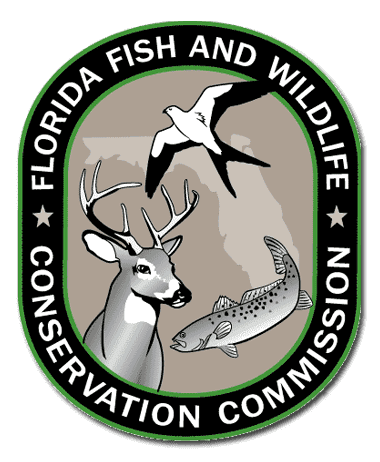Florida FWC: Bears Very Active Right Now

Recently the Florida Fish and Wildlife Conservation Commission (FWC) regional office in Ocala received several calls from excited motorists on Highway 19 in the Ocala National Forest reporting a bear sitting alongside the busy road. They were concerned it was sick or would get hit by a vehicle.
When a biologist went to check it out, she discovered a very natural activity: The bear was sitting off the shoulder of the road, stuffing acorns into its mouth as fast as it could. Fearing the bear might be hit by a car or truck, the biologist tried to chase it into the woods to a safer eating spot. Instead it ran up a nearby oak tree and, after balancing precariously on thin branches, began eating every acorn it could find up there.
“We’re beginning to get lots of calls from people in both rural and urban areas reporting what they think is a sick or hurt bear because it plops itself down for extended periods and casually eats grass, acorns, berries, insects – really any natural food nearby,” said Susan Carroll-Douglas, wildlife assistance biologist for the FWC’s Northeast Region.
In autumn, bears in Florida begin a natural process of putting on fat stores for the winter. To do this they require around 25,000 calories a day and will eat anything that’s convenient. The easier it is to get, the better they like it.
“It takes a lot of acorns, berries, grass, insects and leaves to make 25,000 calories a day,” said Mike Orlando, assistant bear program coordinator for the FWC. “But bears aren’t fussy, and they are very smart. It’s much easier and tastier to consume that many calories by eating food like garbage, pet food, livestock food and birdseed that people leave readily available.”
What does all this mean to the average central Florida resident, besides serious problems for themselves, their family, pets and the bears unless they make some adjustments?
“If you live in most counties in central Florida, you very likely live in bear country. You may see bears frequently, or not at all, but they are living nearby. During this time of year, even those who rarely or never see bears may find one in their yard or walking around the neighborhood munching on acorns and other natural foods,” said Carroll-Douglas.
This is not a cause for alarm, but people need to know what to look for and what they should do if they have seen or suspect bears are nearby. First look for signs of an unseen visit by a bear.
“Signs include garbage strewn all over the place, bird feeders ripped down and seed eaten, livestock or pet food raided, acorns disappearing, footprints that look oddly human-like, and large piles of fecal material, also called scat, filled with acorns, remnants of garbage, corn, and other foods,” said Orlando.
Next, if you see a bear or signs of one, take action to discourage it from hanging around. If one is in your yard, the FWC recommends making a lot of noise to disturb the bear and make it move on. Car horns, air horns, banging pots and pans, noisemakers and yelling can all be effective. It’s also imperative to get rid of or securely store any source of food that would keep it coming back for more, day after day, week after week, and month after month.
“In other words, if you have garbage outside, lock it up; if you have bird feeders up, take them down; if you feed pets outside, pick up the food and dishes when they are finished,” said Orlando.
“Many people who finally call to complain about a bear tell us they like the bears coming around and don’t mind picking up the garbage, or letting the bears eat the pet food. They just don’t like it when the same bears walk into garages, break into screen rooms or hover around school bus stops,” said Carroll-Douglas. “When the bears do these things in search of more food, the people want them gone.”
It is critically important for people to understand the ramifications for themselves and the bears when bears are allowed access to human-provided food. It is hard to convince people that a seemingly benign action like letting the bears eat and tolerating bears in and around their homes creates a nuisance problem with dire consequences.
“If you suspect or see a bear, it is your responsibility to implement a plan that will foil the bear’s attempt to get easy food,” Orlando said. “There are many proven methods available, and we’re happy to talk to you about them.”
People can call the FWC’s Northeast Regional Office in Ocala at 352-732-1225 or check out many valuable tips and methods online at MyFWC.com/Bear.
“Allowing bears to eat and hang around can mean potential injury to humans and near certain death for bears,” Carroll-Douglas said. “It’s hard for us to make people understand the correlation between the food source they supply and the nuisance problems they ultimately experience.”
It’s everyone’s responsibility to do the right thing to help ensure the future of the Florida black bear.
“We’ve had three or four incidents in the past couple of years in our area where bears have bitten or scratched humans. Every single case involved human-provided food, and in the situations where we were able to catch the bear, we had to kill it,” said Orlando.

